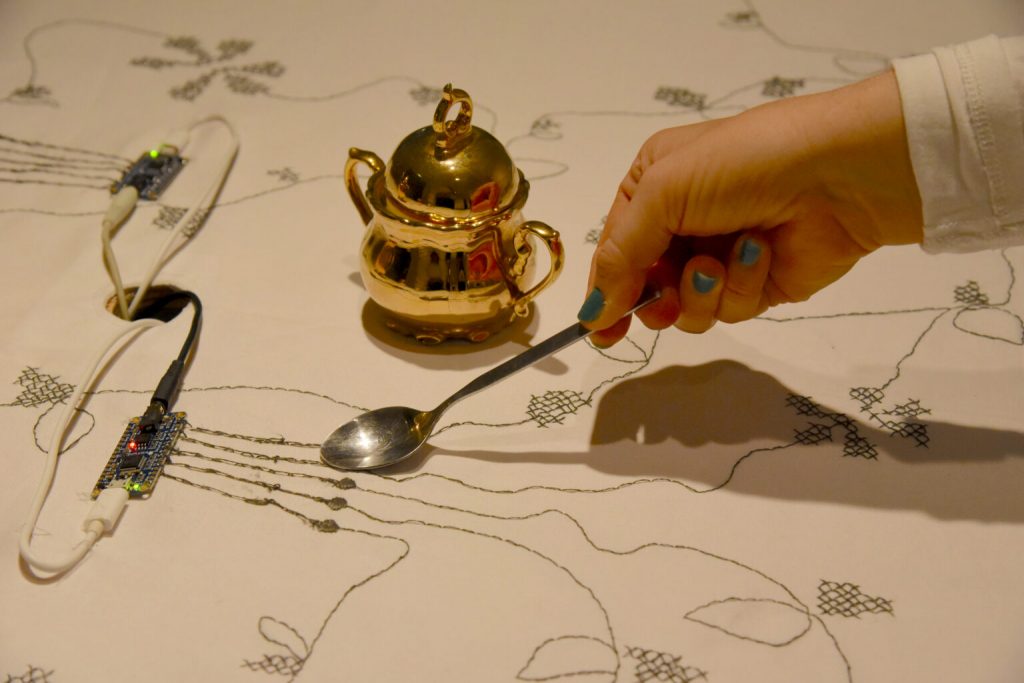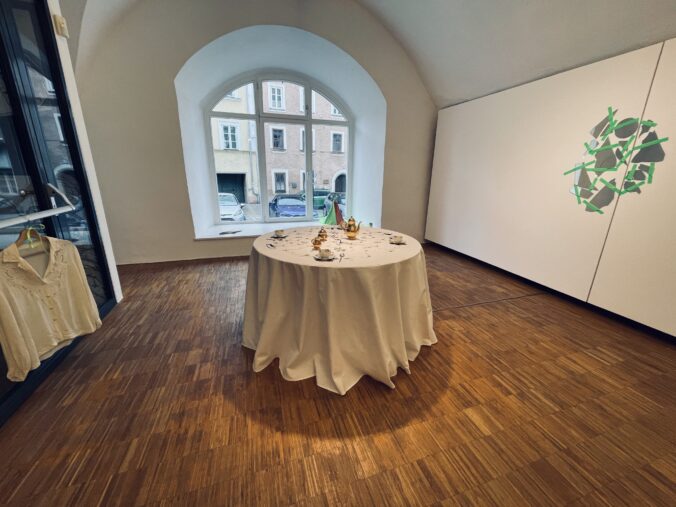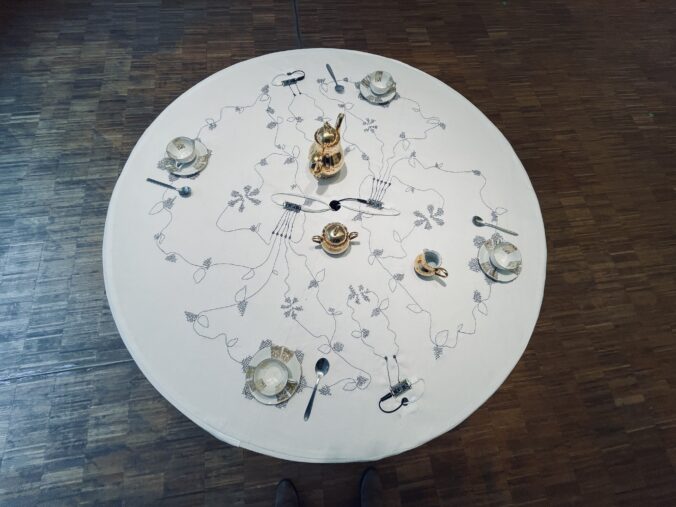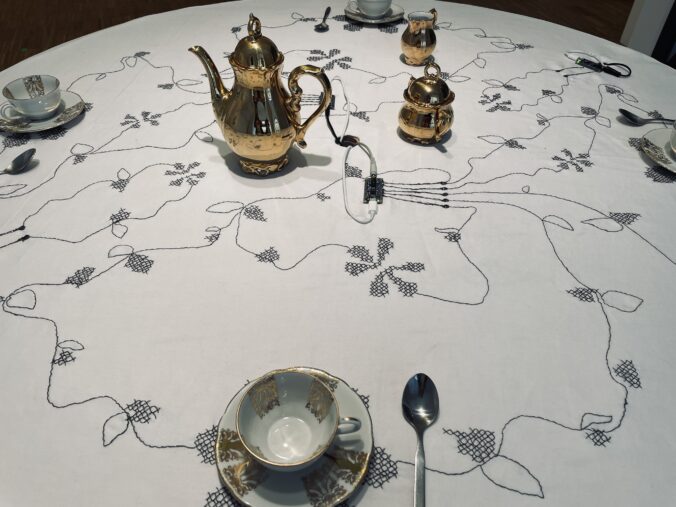Olivia Jaques, Patricia J. Reis, Lale Rodgarkia-Dara, Anna Watzinger and Stefanie Wuschitz
Salzburg, Hallein
Opening: 14. September 19:00
Kaffee Kränzchen & Performance Olivia Jaques and Anna Watzinger
Sa, 17. September 11:00
Guided visit through the exhibition
Fr, 28. October 18:30
Finissage and artist talk
With special thanks to the following artists who collaborated with Mz* Baltazar’s Lab for this exhibition:
Catarina Reis
Erika Farina
Taguhi Torosyan

In our work, we address the legacy of gendered porcelain collecting and the different functions and meaning it created in women’s* lives. In the Western context and the Global South, collecting is typically justified based on aesthetic or academic curiosity. The need to collect however also has a deeper psychological and social reason. It is a form of play. It takes various expressions of fetishism, where object relations emphasize the personal and relational aspects and playful elements. Other more specific justifications for collecting include the thrill of the “hunt,” the preservation of history, aesthetic gratification, investment, and so forth. Therefore, gendered collecting is a specific example of how humans utilize items to fulfil needs and mediate between the self and the outside world in order to forge a sense of self. The tendency to collect is a characteristic of humans, although it is more pronounced in communities with a surplus of material wealth. The process of forming the western identity has been vital, and both art and culture serve as a way of categorizing and organizing human cultures and attributing value to them.

Porcelain, the most collectable form of ceramics, and its collections have had a social function at least from the second half of the 19th century. Women’s ceramic collecting can be regarded as a form of conspicuous consumption and social emulation, by which they imitated other women* located higher on the social ladder. The gathering and exhibition of ceramics within the confines of individual women’s lives was not only just a reproduction of patriarchal norms but also a chance for them to create meaning for themselves and others actively.
Porcelain was relegated from its practical purpose to an aesthetic one, valued for its tactile and visual features, and made ac- accessible for the creation of adorning visual displays. When such pottery was utilized, it was often for ceremonial events like hosting significant visitors. Like other works of art, they also take on extra symbolic importance as status symbols: they reflect the owner’s preferences. They are a platform for the display of taste and distinction as well as the application of specialized expertise. Since the capacity to enjoy them already constitutes a type of power crucial for women, they do not even need to be possessed. At first, women collectors were rare since they did not possess access to financial means, education, or freedom to pursue such activities. By the 1960s, the numbers had started growing. It was also a way of constructing social networks through the gift economy between family and friends.
Building on that legacy, we invite you to rethink the women’s coffee table gathering as a circulation of energies and potentialities that we expose through the electric circuit built with ecologically sentient methods and materials, reflecting on the colonial histories and presents of mining, import, consumption, and appreciation of art and hardware. Secrets will be shared, friendships established, and power reclaimed.
Embroidery by Erika Farina.


